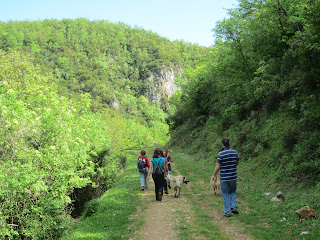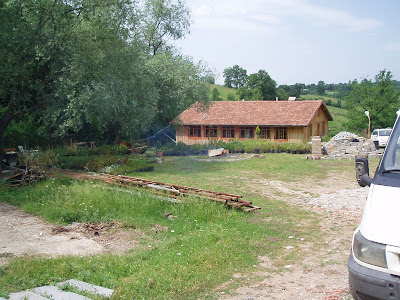Making compost seems one of the primary methods for us all to do our bit towards saving the planet! If we could all reduced the amount of waste we created by processing it into a useful product (compost), we would each be contributing to maintaining the planet and saving energy. Nowadays, even my friends, mother, and her friends who live in flats in cities, are composting their rubbish - every little helps.
So why should we all be making compost?
- It keeps your rubbish in the kitchen more hygienic & clean - ie, not smelly and disgusting!
- You can go for longer before you have to empty the bin (good for busy lives)
- The finished product nourishes the garden
- It can be done on quite a small scale, as well as at the industrial level
- Reduces the volumes & therefore the energy used in municipal transportation
Anything biodegradable can go in the compost: ideally the target is to achieve a ratio of 1:30 Nitrogen to Carbon. For every 1 unit of green stuff you need 30 units of brown. Green is obvious: leaves, stems, pods. Brown is more difficult to achieve, partly because you need so much more of it: dead leaves, bark, woody stuff, paper, ash from the wood fire, cardboard packaging etc. The smaller it's cut up the quicker it degrades into rich dark compost (more surface area) which can go out to feed the garden.
How?
The easiest way to manage composting is the aerobic method, using air. Any sort of container which allows air to penetrate will facilitate composting of the ingredients, but if you can get it nice and hot as well, this speeds it up. A critical minimum volume of about 1 cubic metre seems to get best results, but composting will occur in much smaller volumes as well. It works by employing the natural beneficial bacteria which are found in soil, and which work everywhere, making rocks into soil. They love working in compost because the work is just so much easier! So when you start up your composting, just add some rich brown soil/dirt/sod to the mixture as a starter, and the bacteria will start working straight away, processing the material you give them to work on. The smaller the material, the quicker they can work (so shred your paper & cardboard) and the more air that there is, the better they reproduce, so turning the compost as often as possible is beneficial. You can also add worms, if you want, which keep it aerated and also do lots of digesting.

We use a 3-box method like this: Fill up one cube until it's piled up, then start filling the far side. Turn the first one into the centre, then the second one into the centre on top of it, while starting the process again. Every 2 months or so, I am getting compost out to spread on the raised beds.
Here is another type that we're using, (this one is the Mantis brochure-picture) the drum method: you turn the drum daily, and get a barrow-full of compost after 3-4 weeks:

And at another scale, here is a picture of composting at the municipal scale at Eco-Solutions' yard in Southampton, which I visited a couple of weeks ago: (finished product on the left)
The Composting Association, whose head-quarters are in Wellingborough, has transformed itself - take a look at www.organics-recycling.org.uk
And also at WRAP, www.wrap.org.uk
CT




.jpg)







































